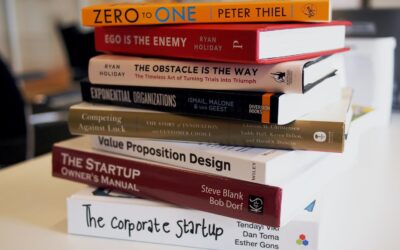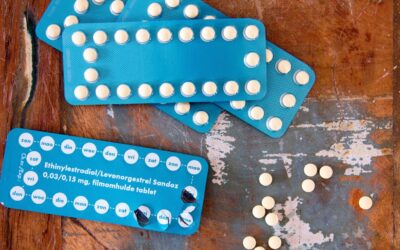The question of “why” looms large. Why my sister? Why my teacher? Why Kate? Why so young?
Experts urge a heart-healthy diet, regular exercise, weight management, and routine medical care, including recommended screenings as cancer prevention strategies. These recommendations, unchanged for decades, are failing miserably to adequately protect an alarming sector of our young adults.
Do we remain on standby? Stay the course and hope science will sort this out soon? Or do we recognize that health harm is a tangled mess, woven in the advances of our modern lives and that current approaches cannot provide the answers.
Some of the usual suspects—processed foods, microplastics, hair products, pharmaceuticals, and a litany of environmental toxins—are possible culprits. These harms touch all of us in some manner, but when, how often and how much matters at the end of the day. Why is one person spared while the other is not?
Do genes matter?
The genetic hand we were dealt at birth (genes we are born with), while a factor, is not the culprit. Our forebears routinely navigated away from early onset cancers. Three decades is far too short for genes to change their susceptibility to various risks. A more complex interplay is at work, one of gene expression (how we play our cards) shaped by the unique path each of us navigate in our daily lives.
Perhaps our greatest gift is that we have each other. Millions and billions of planetary cohabitants that en mass could shine a serious light on what matters most to whom at what time. In the UK alone, there are approximately 400,000 new cases of cancer annually. Combine the detailed life experiences of these individuals with those that have accidentally navigated around these health harms and AI will be able to rapidly expose the secrets of this dichotomy.
Can AI do this?
Denmark has had remarkable success with AI exploring the lived experiences of their six million citizens. This recent effort explored life events related to health, education, occupation, income, address, working hours and more recorded with almost day to day resolution. In short, the model outperformed state of the art models by a wide margin when looking at diverse outcomes such as early mortality. This is an example of what could be possible. Could a similar approach have spared Kate? The UK has ten times the number of citizens and a hefty cancer diagnosis annually. Clearly a lot could be learned.
Moneyball at the national level!
Of course this author is obsessed with collective action to prevent unnecessary harms but to be clear, along with the co-production of health intelligence is the opportunity for a next era in wealth co-production. The Washington Post piece, covering this Denmark study, pegged the value as similar to achieving Moneyball returns at the national level.
Can healthcare do this?
Sadly healthcare records today merely hold billing and disease management data. The data that could link the tangle of health harms to our activities of daily living do not, and most agree should not, reside inside industry-managed recording systems. A preferred strategy would enable people to source and manage their own health data. In fact robust and diverse health expression data is increasingly harnessed by individuals using apps and wearables to track movement, nutrition, sleep and so on. It would be relatively straightforward to expand into tracking plastic exposure, beauty products, air quality, fertilizer use, and many more nuances of our lived experiences.
What’s missing? The elephant in the room.
Are we stuck with an untenable tradeoff? Must we divulge the details of our lives if we hope to spare ourselves and others a devastating diagnosis? Denmark’s model, as impressive as the outcomes were, relies on default citizen participation and is not a blueprint for a global movement. The rest of us will need strong assurances of ongoing privacy and security in order to engage in this level of health intelligence co-production.
How do we get it done? Use the 3-Zone model
This approach is outlined in this short post and further details are offered in this book also available as an NFT.
Zone I is our home base where each individual easily contributes the minutiae of their lives for on demand, immediate and accurate retrieval, personal AI analysis, and participation in diverse data market places as needed throughout the decades of their lives. Personal privacy is safeguarded.
Zone II is a continuous correlation AI that is non rivalrous in every way. No intellectual product or commercialization options here. Access to a plethora of homebase health expressions, correlations will illuminate potential health harms and offer potential solutions at the pace of change.
Zone III is duly separated from Zone I and II such that individual protections remain in place. This zone houses industry, governments, researchers and others that add scientific rigor to pre-approved correlations to untangle causal relationships and build new products and services based on the robust intelligence generated from ground truths.
Sparing future generations of early onset cancer requires us to start now.
With the tools at our disposal—apps, wearables, and AI—we can band together to forge a new frontier in health care. One where personalized, data-driven insights guide us away from devastating disease, and towards a future marked by health, vitality and longevity. Let’s embrace our shared responsibility to shield not only ourselves but also those who follow from the daily health harms that lay hidden now and into the future of our ever-evolving modern world.
Science cannot do this alone. AI cannot do this with the data currently available. We can do this. The time to act is now. Let us seize this moment, and in doing so, we spare many individuals of disease while also providing a path for AI alignment into perpetuity.
Today’s silent health harms were built on our watch. Thus we have a responsibility to younger generations to deliver the infrastructure to enable by-the-people, for-the-people highly specific health intelligence that advances at the pace of change.
We can do this. Let’s get started.
Note: Expect a follow on post detailing the use of personal AI agents as digital fiduciaries in examples of the 3-Zone model…coming soon.Report this
Published by

Physician Speaker: Web3 and AI, Author “Wealthcare: Demystifying Web3 and the Rise of Personal Data Economies | Healthcare Advisor | Nex Cubed | TiE Board and Charter Member | DM me for speaking or consulting engagements
Younger people are getting cancer. Traditional strategies are failing miserably. New approaches are needed that involve mass participation. Science cannot do this alone but ensuring privacy and security with a 3-zone model could set the stage for a new era of personally-relevant health intelligence that spares us all of early onset cancers.
#web3, #cancer, #blockchain, #health, #healthcare, #AI, #LLMs, #preventivehealth, #data, #datascience



















